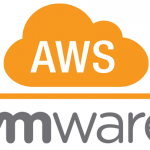VMware Hybrid Cloud Extension (previously known as HCX technologies) was announced during VMworld 2017 Europe as a App Mobility and Infrastructure Hybridity Across Any-to-Any vSphere.
VMware announced the initial availability of Hybrid Cloud Extension with VMware’s Cloud Provider partners IBM and OVH.
VMware HCX’s technologies have been created to specifically overcome the above challenges, and to enable service providers and enterprise to get to the desired state quickly, starting also from old vSphere 5.x environments.
The following picture depicts key elements of the HCX service model.
Numbers below refer to the respective numbers in the diagram above.
- Existing vSphere-based environment – Any existing vSphere environment (version 5 and up), whether this be an enterprise on-premises environment, or a managed service provider environment, can leverage the HCX service to migrate to the desired cloud or modern data center.
- Modern DC / Cloud – Today, we have IBM and OVH realizing modern cloud architectures, built leveraging VMware Cloud Foundation. HCX services can now be leveraged to enable infrastructure hybridity between on-premises and cloud, and to migrate and mobilize existing applications to the cloud.
- VMware HCX technologies – Today, we announce Initial Availability of VMware HCX technologies, available to our key partners IBM and OVH. The service will be integrated into the respective Cloud Provider portals, and provides the following features:
- Multi-site multi-version interoperability between legacy vSphere (vSphere 5.x) and modern VMware Cloud Foundation or SDDC environments.
- Automated deployment, instantiation, monitoring and management of HCX client on source and destination stacks.
- Ongoing updates to the service, as VMware SDDC stack technologies evolve over time
- Infrastructure Hybridity – HCX creates a secure, high performance and highly reliable interconnect fabric between disparate vSphere environments, enabling loose coupling of multiple sites. Following are some of the key features:
- Network extension of L2 networks between on-premises and cloud.
- No need to re-IP and re-factor workloads – inbuilt layer 2 extensions let customers keep the same networks, IP and routing policies in place while moving workloads.
- WAN optimization and highly efficient connectivity.
- Secure, suite B AES 256 encryption based connectivity.
- Intelligent traffic engineering, and load balancing between public and private links.
- Application aware traffic engineering and control. Fair distribution of traffic based on load.
- Automated proxy of vSphere Replication, vMotion® and SDDC stack protocols across iWAN.
- Application migration and mobility at scale without downtime – HCX provides the following application mobility capabilities to customers:
- Bulk migration based on secure replication enables migration of VMs on a large scale with minimal downtime.
- Secure Live vMotion – HCX proxies vMotion, resulting in a secure, zero downtime live migration to the cloud, over the HCX interconnect fabric described above.
- Any-to-Any mobility – Secure vMotion and bulk migrations can be achieved between legacy vSphere 5.x infrastructure, and next gen VCF based SDDC infrastructure.
- Hybrid Application landscapes – The architecture allows critical resources to remain on-premises e.g. databases or storage. Also, the architecture allows for a hybrid DMZ where enterprises can bring their own appliances to the cloud e.g. firewalls or load balancers.
- Built-in business continuity – HCX also provides DRaaS to enable business continuity while migrating/moving applications. Customers can define 5-minute RPO/RTO for VMs. Most importantly, HCX tackles all aspects of application uptime, including reachability, security, IPAM and connectivity policies.
Hybrid Cloud Extension abstracts vSphere-based on-premises and cloud resources and presents them to the apps as one continuous resource, creating infrastructure hybridity. At the core of this hybridity is a secure, encrypted, high throughput, WAN optimized, load balanced, traffic-engineered interconnect that provides network extension. This allows support for hybrid services, such as app mobility, on top of it. Apps are oblivious to where they reside, independent of the hardware and software underneath.
The most interesting part is that Hybrid Cloud Extension can migrate from vSphere versions starting with vSphere 5.0 to next-generation solutions such as VMware Cloud Foundation without requiring vSphere upgrades. So it could be a great migration tool for who cannot directly affort VMware Cloud on AWS, or need a different service provider.



